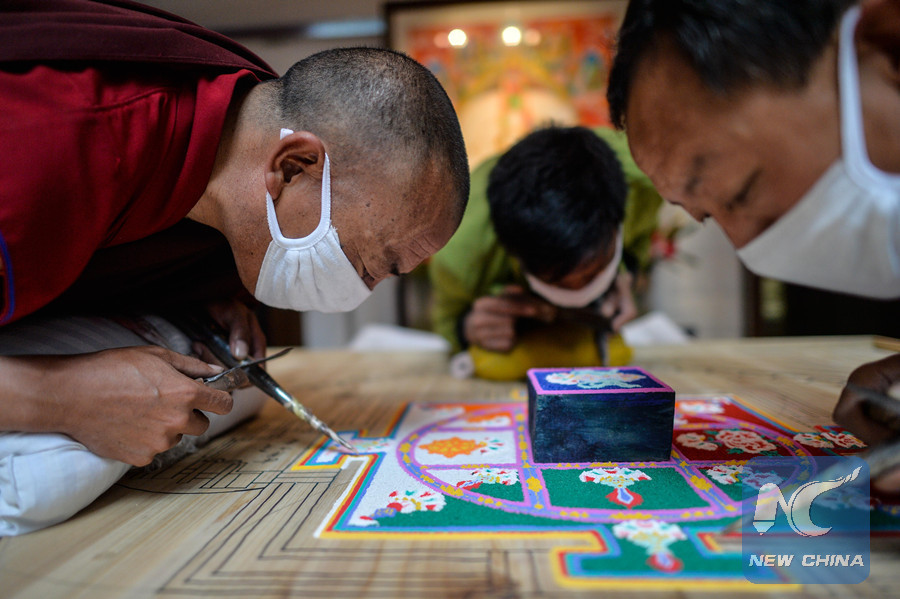
Tibetan Buddhist monks and assistants work on the sand mandala on May 12, 2016. (Xinhua/Purbu Tashi)
BEIJING, June 3 (Xinhua) -- Remember that feeling of watching the tide lap at a sandcastle you'd made on the beach?

A Tibetan Buddhist monk meditates while the assistants making prepareation before start working on the sand mandala on May 11, 2016. (Xinhua/Purbu Tashi)
Well, extend the creative side of that work to weeks or even months and you know how a Tibetan Buddhist monk might feel on completing a sand mandala.

A Tibetan Buddhist monk and his assistant work on the sand mandala on May 20, 2016. (Xinhua/Purbu Tashi)
Unique to Tibetan Buddhism, the sand mandala is created from colored powders, as suggested by its Tibetan name "dul-tson-kyil-khor".

A Tibetan Buddhist monk meditates before start working on the sand mandala on May 11, 2016. (Xinhua/Purbu Tashi)
Lamas spend weeks on end designing and painstakingly laying millions of sand grains on flat platform to create a mandala - a visual representation of the enlightened mind of the Buddha.
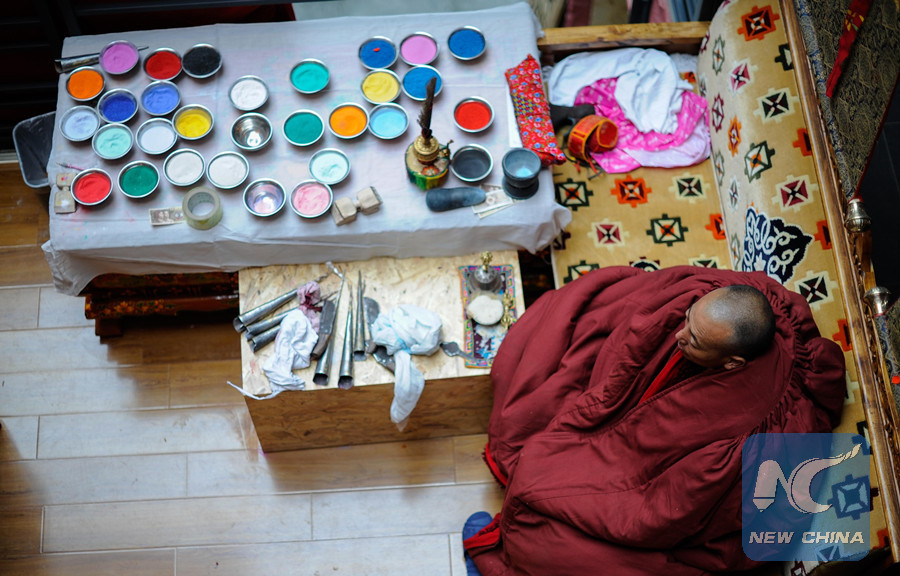
A Tibetan Buddhist monk meditates before start working on the sand mandala on May 10, 2016. (Xinhua/Purbu Tashi)
To the monks, who must study for years before they even qualify to lay a grain of sand, the process is sacred, so it begins with a ceremonial recital of mantra.
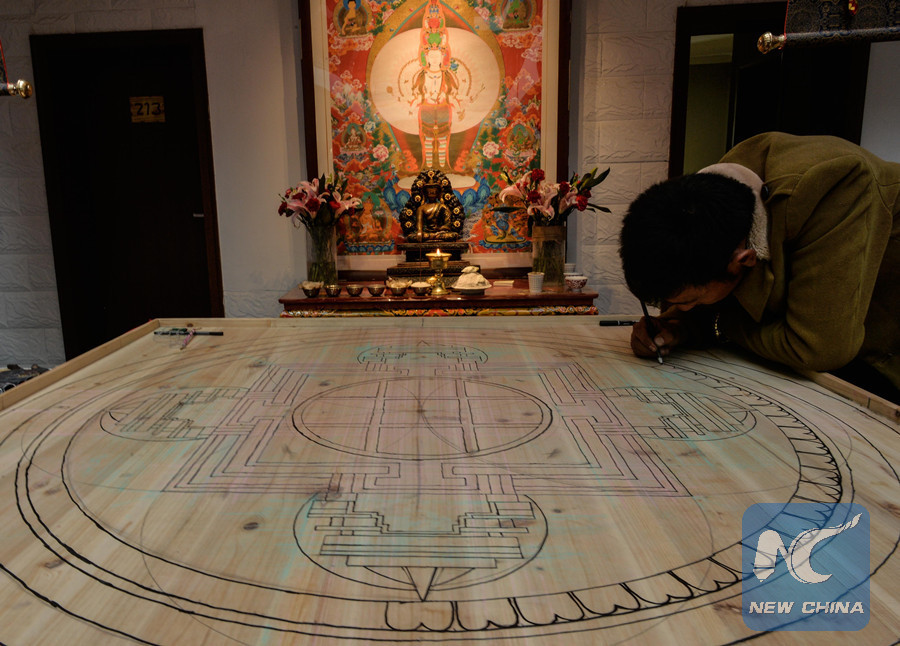
An assistant draws blueprint for the sand mandala on May 10, 2016. (Xinhua/Purbu Tashi)
The next step is creating a central point on a wooden platform, and from it the outline of the mandala. The platform can be either small or big, like the mandala, depending on the time it takes.
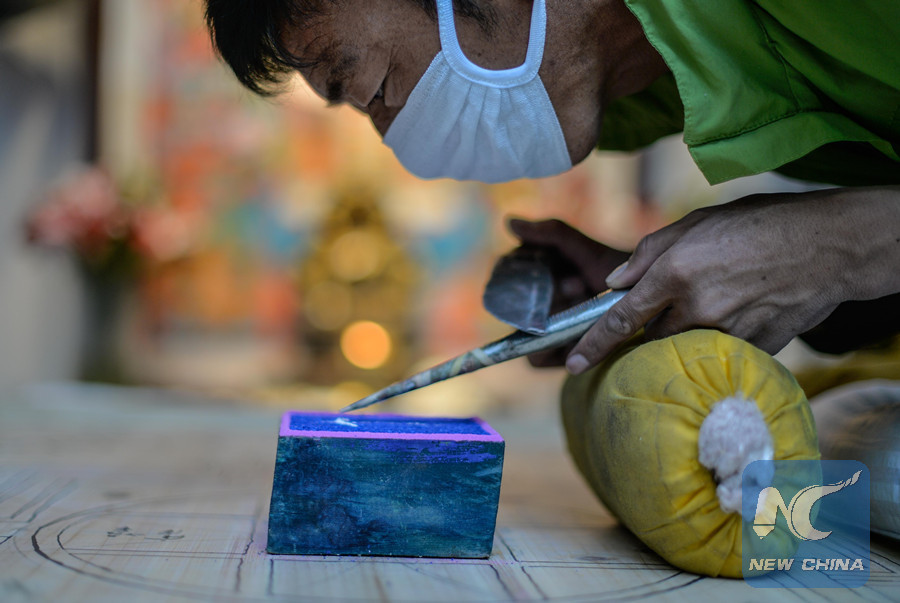
An assistant lays sand grains at the center of the sand mandala on May 11, 2016. (Xinhua/Purbu Tashi)
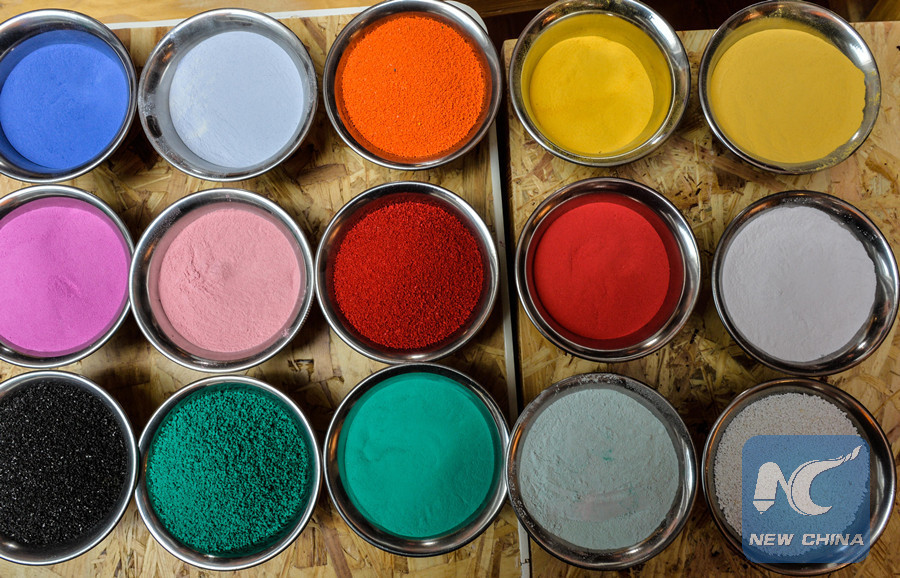
Photo taken on May 10, 2016 shows mineral powders used to create the sand mandala . (Xinhua/Purbu Tashi)

Photo taken on May 10, 2016 shows tools used to create the sand mandala . (Xinhua/Purbu Tashi)
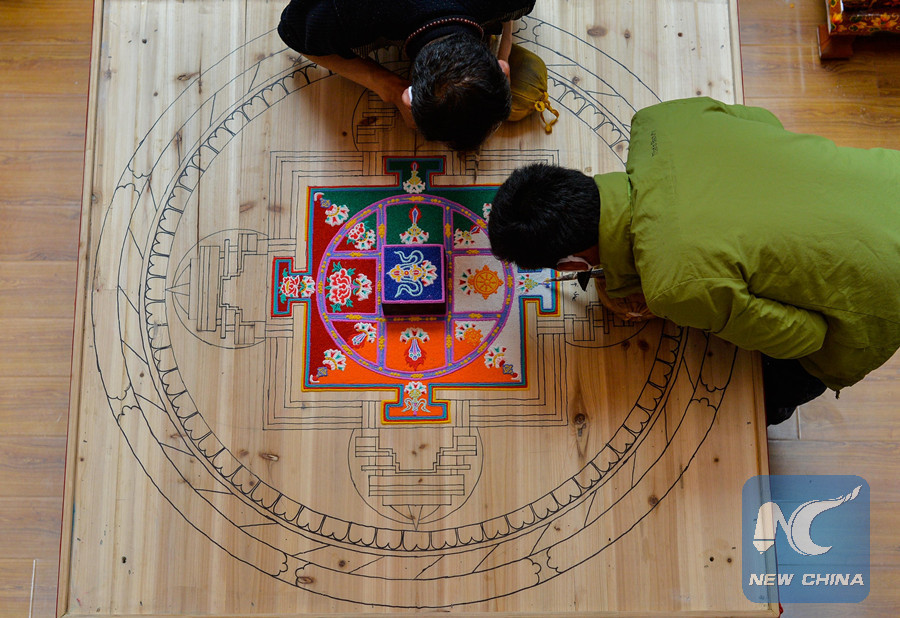
Assistants are doing decoration on the sand mandala on May 11, 2016. (Xinhua/Purbu Tashi)
Then the outlines are filled in with colored sands made from crushed minerals. Each monk holds a funnel-like metal device containing sand and scrapes its serrated side with a metal rod, creating a vibration that makes the sand flow like liquid onto the design.

Photo taken on May 20, 2016 shows some of the patterns of the sand mandala . (Xinhua/Purbu Tashi)
The patterns seem basic, but they are actually extremely complex. They contain traditional icons and ancient spiritual symbols. The structures and layers also have specific meanings.
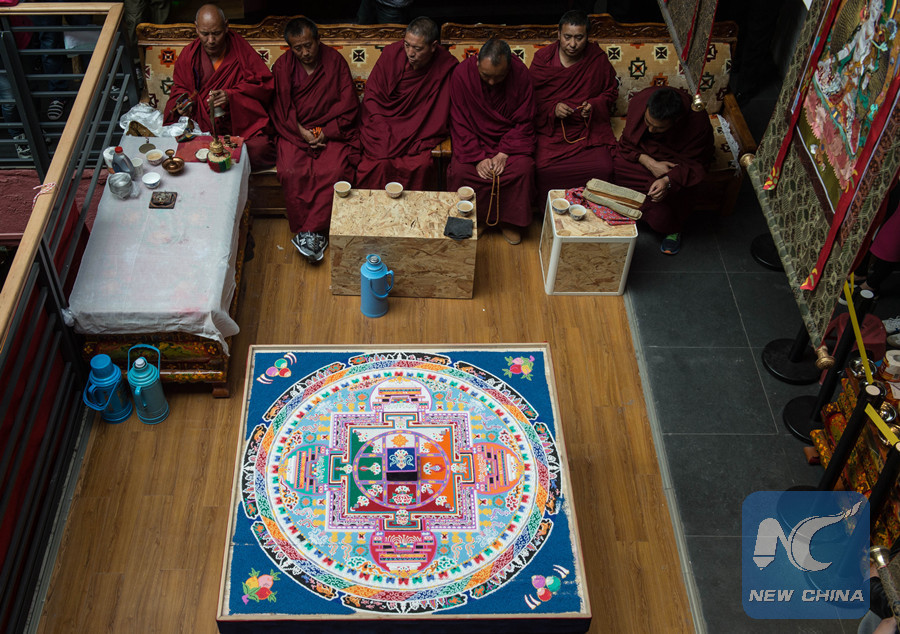
Tibetan Buddhist monks meditate after finishing the sand mandala on May 20, 2016. (Xinhua/Purbu Tashi)
Once completed, the mandala is blessed - and then demolished.
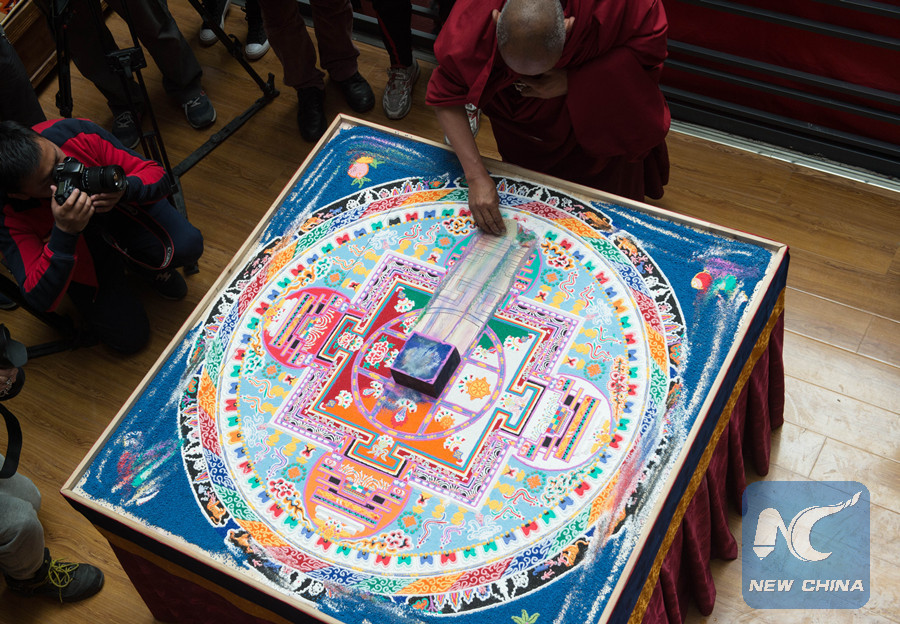
A Tibetan Buddhist monk is destroying the sand mandala on May 20, 2016. (Xinhua/Purbu Tashi)
The entire process is undone methodically, with the sand brushed into the center of the platform and then poured into a nearby water body.

A Tibetan Buddhist monk is destroying the sand mandala on May 20, 2016. (Xinhua/Purbu Tashi)
And the lesson? To learn not to get attached to the material universe.

Photo taken on May 20, 2016 shows the completed sand mandala . (Xinhua/Purbu Tashi)
The mandala symbolizes impermanence: some beauty is only meant for this world for a short time.

